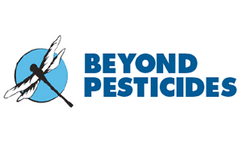Refine by
Crop Spraying Articles & Analysis
17 news found
MagGrow’s technology helps farmers significantly reduce waste and drift linked to conventional crop spraying, delivering optimal plant protection using permanent rare earth magnets. ...
Along with nitrogen, phosphate comprises an integral component of the fertiliser that farmers use to spray crops and maximise agricultural yields all over the world. But while our atmosphere is composed of nearly 80% nitrogen, making that particular element virtually limitless, phosphate derived from rocks is in short supply. ...
Some Nursery Sprayer History Fairview used outdated and highly customized equipment for a long time to spray crop trees and bushes. For instance, this Ford tractor was converted to a high clearance tractor. ...
Calcium is a key component in many crop nutrition programmes. Providing sufficient levels of calcium strengthens and stabilises cell walls, helping crops build natural resistance to pests and common disorders such as Internal Rust Spot in potatoes, Cavity Spot in carrots and Tip Burn in lettuce. In addition to cell wall structure, its role in root development and ...
The AutoGuide steering assist system and section control features available on Valtra tractors make spraying crops much easier, as Jyrki Rantsi, a pig farmer from Varpaisjärvi in the North Savo region of Finland, can attest. ...
Organic and specialty crop growers are trying to profit off the rising consumer interest in locally grown, natural foods. But those smaller farms are often islands surrounded by a sea of conventionally grown crops that get sprayed with herbicides, insecticides and fungicides. ...
A University of Florida-developed web tool can bring growers $1.7 million more in net profits over 10 years than a calendar-based fungicide system because it guides growers to spray their crop at optimal times, a new UF study shows. The Strawberry Advisory System, devised by an Institute of Food and Agricultural Sciences researcher, takes data such as ...
A disease called “late blight” killed most of Ireland’s potatoes, while today it costs Florida tomato farmers millions each year in lost yield, unmarketable crop and control expenses. For more than a century, scientists thought the pathogen that caused late blight originated in Mexico. ...
Cereal is the leading technical event for the UK arable industry. 500 leading suppliers join Enduramaxx to display products and promote services to 26,000 visitors and deliver live demonstrations spanning crop plots, working cultivations, sprays and sprayers, post-harvest technology, business area, and potatoes and renewables. ...
Growers of pulse crops selling to export markets should be wary of being caught out by exceeding pesticide MRLs (Maximum Residue Limits) set in the countries buying their produce, according to Queensland Department of Agriculture, Fisheries and Forestry senior entomologist Mr Hugh Brier. ...
The farm’s director told Agency officers he thought the wheel of the crop sprayer he had been towing had caught in a rut tipping it over and spilling about 5,000 litres of agricultural chemical into Toppesfield Brook. ...
For example, in summertime I went out at four in the morning to spray the crops, then flew to Brussels for a meeting at ten and then returned to continue spraying before midnight. ...
The proposal, put forward at a meeting of the Standing Committee on the Food Chain and Animal Health, would restrict the application of neonicotinoids as granules, seed-treatment or spray, on crops that are attractive to bees, particularly, sunflowers, rapeseed, corn, cotton, and cereal crops. ...
Farmers often resort to using chemical pesticide sprays to mitigate the problem. But pesticides are usually applied without taking basic safety precautions such as protecting oneself against the spray mist, or using the correct dosage and intervals between applications. ...
An extensive US study over 15 years showed that 77% of harvester fires initiated in the combine engine bay. “Crop materials collecting or clumping on hot components can ignite, then embers can drop down or are blown around the machine and into the crop to cause smouldering and spot fires,” Dr Quick said. ...
However, farmers have started to resent the refuges because they also allow the bollworm to persist — costing them millions of dollars annually in crop losses and insecticide sprays. They therefore asked the US Environmental Protection Agency for permission to dispense with the refuges and instead begin releasing sterile moths, which then conducted ...
The legislation also prohibits most aerial crop-spraying thereby helping to protect both farm workers. Fortunately, many pesticides are non-essential components of our current farming practices - alternatives do exist. ...













